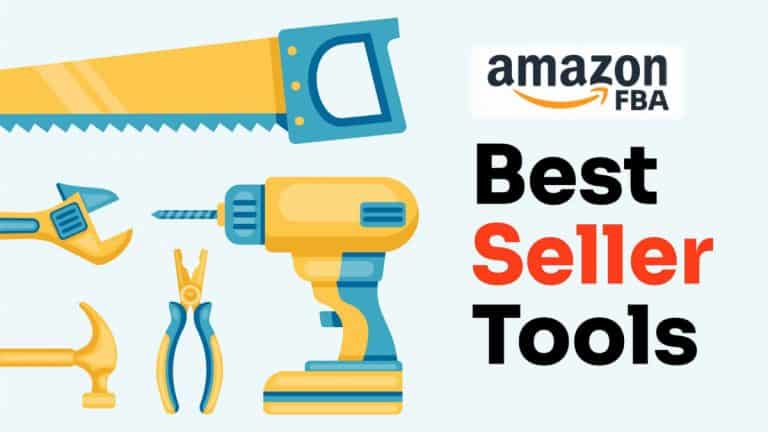E-Commerce Trends in 2025: What Amazon, Walmart, and TikTok Shop Sellers Need to Know

E-Commerce Trends in 2025: What Amazon, Walmart, and TikTok Shop Sellers Need to Know
The e-commerce industry is evolving rapidly, and 2025 is set to bring new trends that will reshape how businesses sell online. Platforms like Amazon, Walmart, and TikTok Shop are at the forefront of this transformation, offering sellers exciting opportunities to scale their businesses. Whether you’re an established seller or just starting out, staying ahead of emerging trends is crucial for success. In this blog, we’ll explore the key e-commerce trends in 2025 and how sellers can leverage them to drive growth and profitability.
AI-Powered E-Commerce and Automation
Artificial Intelligence (AI) is playing an increasingly significant role in e-commerce. In 2025, AI-driven tools will continue to enhance customer experiences through personalized recommendations, dynamic pricing, and automated chat support. Amazon, Walmart, and TikTok Shop are all integrating AI to improve search algorithms, helping customers find products more efficiently. Sellers who adopt AI-powered analytics tools will gain deeper insights into consumer behavior, allowing them to optimize product listings, pricing, and advertising strategies.
Social Commerce and the Rise of TikTok Shop
Social commerce is expected to dominate online shopping in 2025, with TikTok Shop leading the way. As more consumers turn to social media for product discovery, sellers must leverage short-form videos, live shopping events, and influencer collaborations to engage their audience. TikTok’s algorithm favors engaging content, making it essential for brands to create visually appealing and informative videos. Those who master social selling will have a competitive edge in this fast-growing market.
The Growth of Walmart Marketplace
Walmart Marketplace is rapidly expanding, offering sellers an alternative to Amazon with lower fees and high customer trust. In 2025, Walmart will continue to refine its e-commerce infrastructure, focusing on faster fulfillment options and improved seller support. Sellers looking to diversify their revenue streams should consider listing products on Walmart Marketplace to reach a broader audience. Additionally, Walmart’s in-store pickup and same-day delivery services will provide added convenience for customers, increasing conversion rates.
Amazon’s Focus on Sustainability and Eco-Friendly Products
Sustainability is becoming a priority for online shoppers, and Amazon is taking steps to meet this demand. In 2025, we’ll see a greater emphasis on eco-friendly packaging, carbon-neutral shipping, and sustainable product lines. Amazon’s Climate Pledge Friendly program highlights environmentally responsible products, making it easier for conscious consumers to shop. Sellers who incorporate sustainability into their branding and product selection will attract more customers and improve their rankings on the platform.
Personalized Shopping Experiences and Customer Engagement
Customers now expect a personalized shopping experience, and e-commerce platforms are using data-driven insights to deliver tailored recommendations. Amazon’s AI-driven product suggestions, Walmart’s enhanced customer insights, and TikTok’s personalized content feed are all designed to increase engagement and conversions. Sellers should focus on optimizing product pages with targeted keywords, high-quality images, and compelling descriptions to align with these evolving consumer expectations.
Omnichannel Selling and Marketplace Diversification
Relying on a single platform is no longer a viable strategy in 2025. Successful sellers will embrace an omnichannel approach, selling across multiple platforms such as Amazon, Walmart, TikTok Shop, and Shopify. By diversifying sales channels, businesses can reduce dependency on one marketplace and mitigate risks associated with policy changes or competition. Integrating inventory management tools and cross-platform marketing strategies will be essential for seamless operations and increased revenue.
Faster and More Flexible Fulfillment Options
Speed and convenience are key factors driving online purchases. Amazon’s FBA (Fulfillment by Amazon) and Walmart Fulfillment Services (WFS) will continue to evolve, offering sellers faster and more cost-effective shipping solutions. In addition, third-party logistics (3PL) providers will play a crucial role in helping businesses manage fulfillment efficiently. TikTok Shop is also enhancing its logistics capabilities to streamline product deliveries, making it easier for sellers to meet customer expectations.
Voice Search and Conversational Commerce
Voice commerce is gaining traction as more consumers use smart assistants like Alexa and Google Assistant for shopping. In 2025, optimizing product listings for voice search will be essential for staying ahead. Using natural language keywords, answering common customer queries in product descriptions, and leveraging AI-driven chatbots will help improve discoverability and conversions.
Conclusion
The e-commerce landscape in 2025 is full of opportunities for sellers who stay ahead of the latest trends. AI-driven automation, social commerce, marketplace diversification, and sustainable product offerings are key areas to focus on. By adapting to these changes and leveraging the strengths of Amazon, Walmart, and TikTok Shop, sellers can build a profitable and future-proof e-commerce business. Staying proactive and embracing innovation will be the key to long-term success in this competitive industry.





